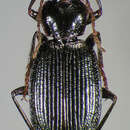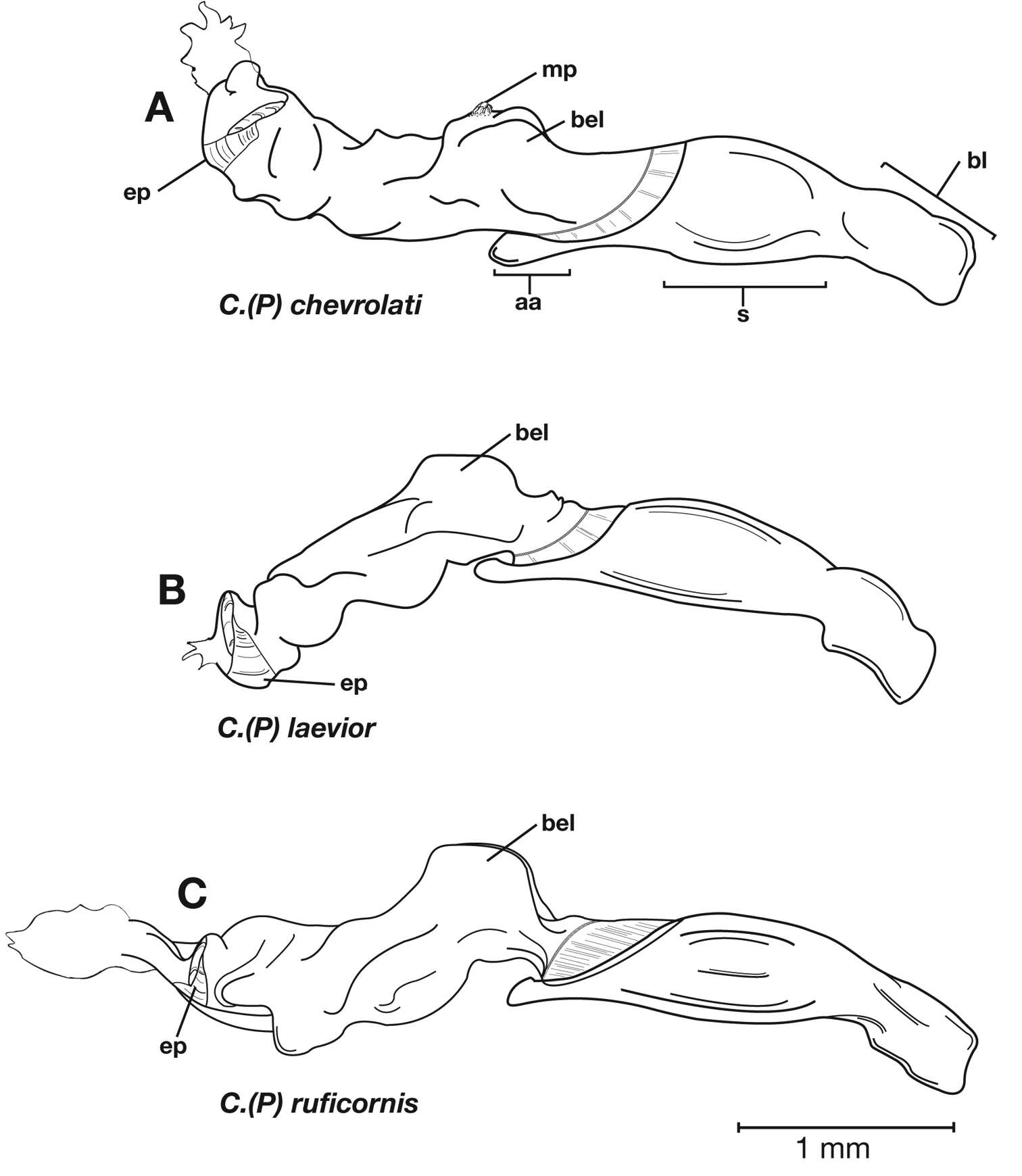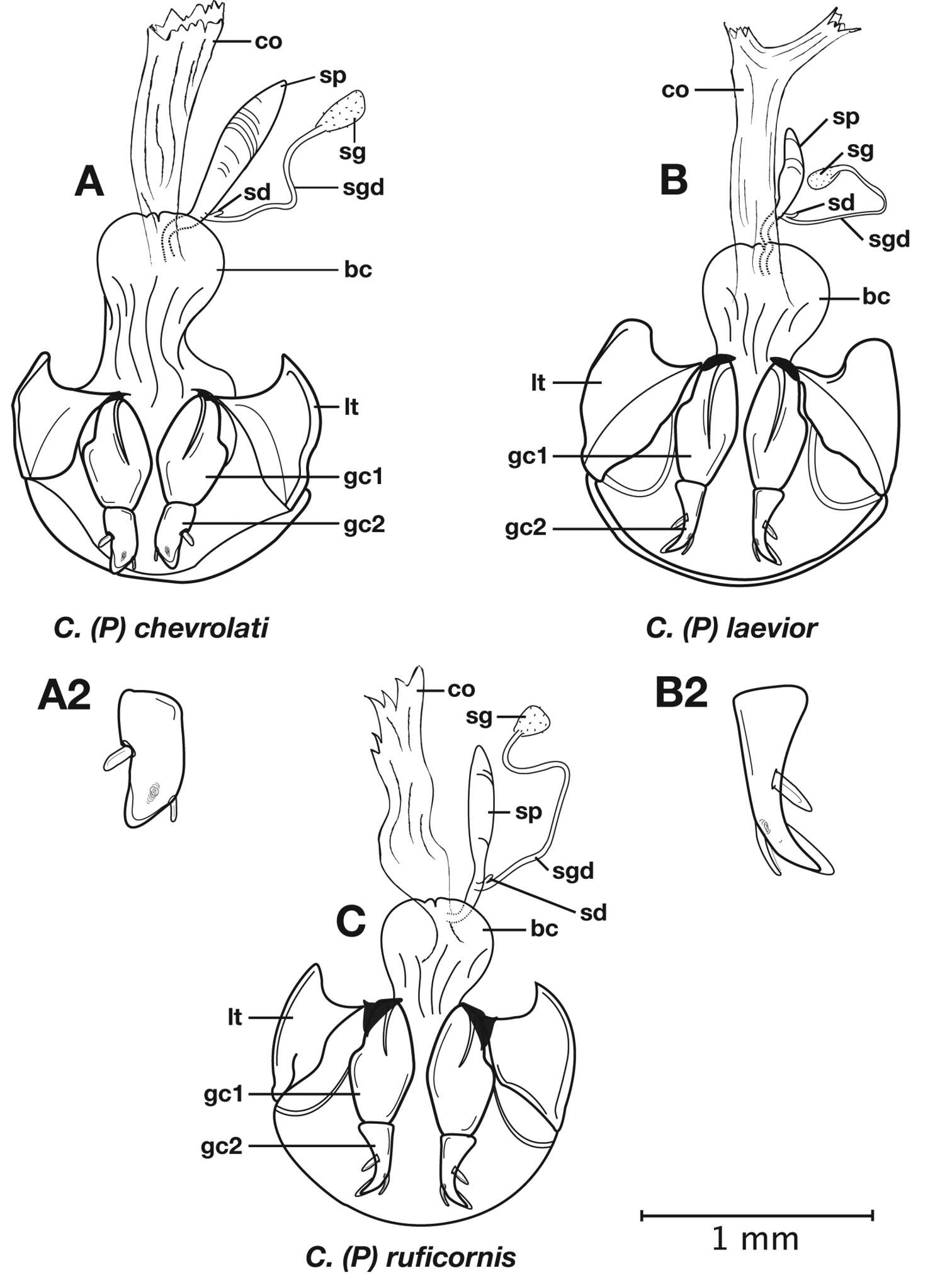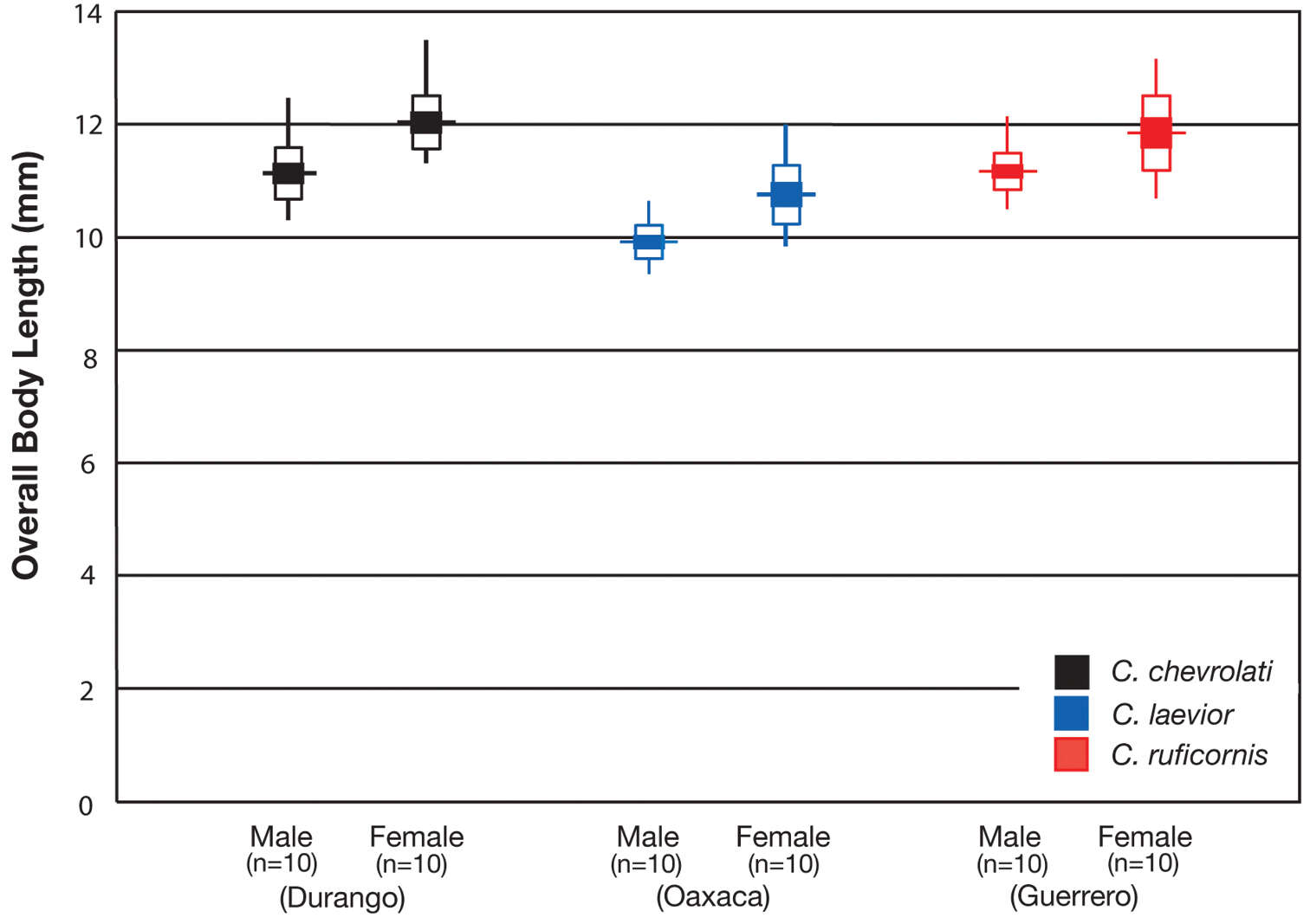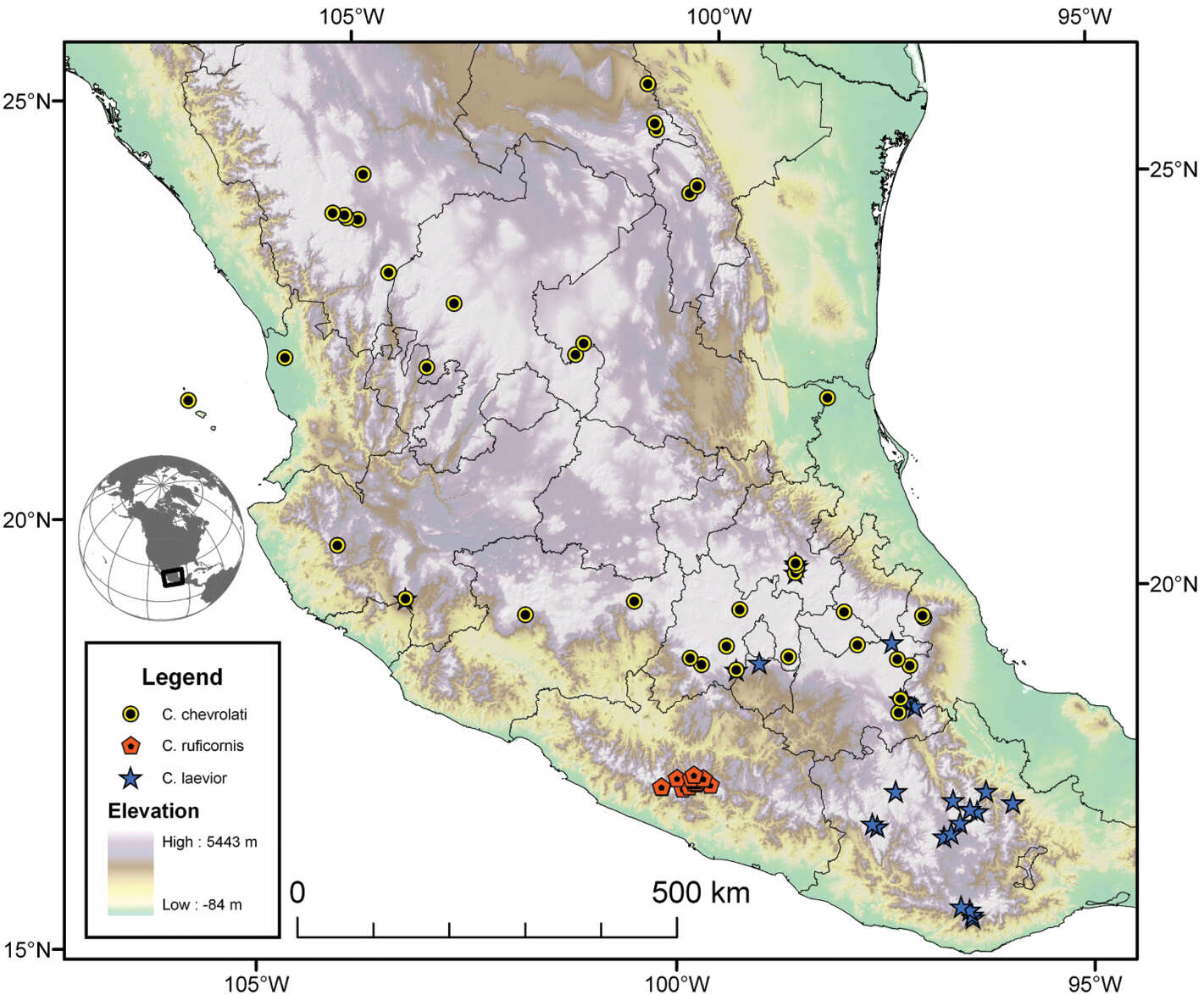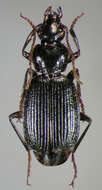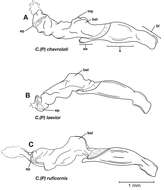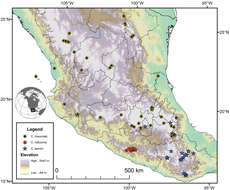-
Figure 33. Dorsal habitus and color pattern of Cymindis ruficornis (Bates) (OBL 11.50 mm).
-
Figure 34. Male genitalia of species of the chevrolati complex, right lateral aspect, with endophallus everted: A, Cymindis chevrolati Dejean; B, Cymindis laevior (Bates); C, Cymindis ruficornis (Bates). Legend: aa, apical area; bel, basal endophallic lobe; bl, basal lobe; ep, endophallic plate; mp, microtrichial patch; s, shaft.
-
Figure 35. Female reproductive tracts and ovipositors of species of the chevrolati complex, ventral aspect: A, Cymindis chevrolati Dejean; A2, gonocoxite 2 enlarged; B, Cymindis laevior (Bates); B2, gonocoxite 2 enlarged; C, Cymindis ruficornis (Bates). Legend: bc, bursa copulatrix; co, common oviduct; gc1, gonocoxite 1; gc2, gonocoxite 2; lt, lateral tergite; sd, spermathecal diverticulum; sg, spermathecal gland; sgd, spermathecal gland duct; sp, spermatheca.
-
Figure 38. Hubbs-Perlmutter diagram illustrating overall body length (mm) variation in population samples of Cymindis chevrolati Dejean, Cymindis laevior (Bates), and Cymindis ruficornis (Bates). Horizontal lines show mean; vertical lines indicate sample range; white + colored boxes indicate 1.5 standard deviations each side of the mean; and colored boxes indicate 2 standard errors each side of the mean.
-
Figure 40. Hubbs-Perlmutter diagram illustrating wing length (mm) variation in Mexican state population samples of Cymindis chevrolati Dejean, Cymindis laevior (Bates), and Cymindis ruficornis (Bates). Horizontal lines show mean; vertical lines indicate sample range; white + colored boxes indicate 1.5 standard deviations each side of the mean; and colored boxes indicate 2 standard errors each side of the mean.
-
Figure 41. Map of extreme southeastern Texas, U.S.A. and Mexico north of the Isthmus of Tehuantepec, showing position of localities for species of the chevrolati complex.

